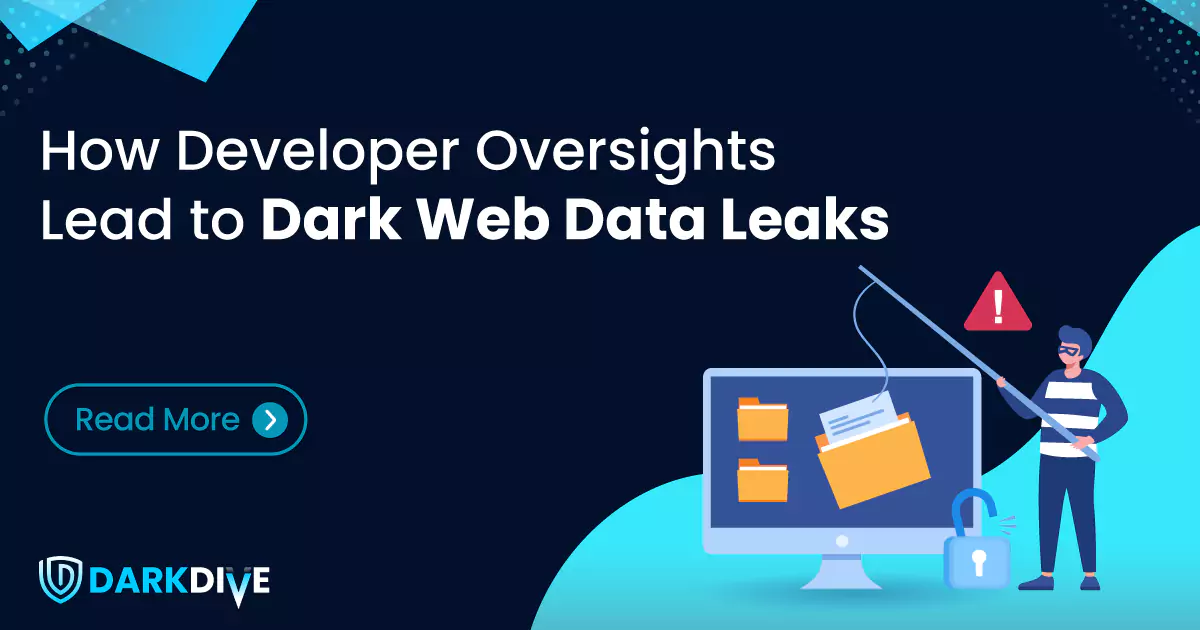
Misconfigured systems. Hardcoded credentials. Unsecured endpoints. In the real world, most data leaks don’t begin with a flashy exploit. They begin quietly, during a commit, a code push, or a forgotten environment left exposed. These early-stage lapses may seem benign. But they often mark the first chapter of a breach lifecycle that ends with your company’s data for sale on the dark web.
If your dev pipeline isn’t hardened, you’re not just risking bugs. You’re leaking business intelligence.
Common Developer Oversights That Lead to Dark Web Exposure
In fast-paced development cycles, speed often trumps scrutiny. That’s where the cracks form. Developers might accidentally commit hardcoded credentials, staging URLs, or API tokens to repositories, some of which were once private but are now exposed. Meanwhile, test environments designed to mirror production are often left with weak or no access controls, making them easy targets for attackers scanning for low-hanging entry points. Even CI/CD pipelines, if misconfigured, can store sensitive logs or build artifacts that reveal backend structures. The use of third-party open-source libraries further adds to the risk, especially when vulnerabilities go unpatched or permissions are too broad. These aren’t rare occurrences; they’re routine oversights that cybercriminals know exactly how to exploit.
When the Leak Goes Dark
Once developer-originated data lands in criminal hands, it’s treated as fuel. Attackers don’t just dump it they analyze it. A leaked staging URL can be mapped. A set of exposed credentials can unlock sandbox environments. System logs with metadata can reveal backend structures, endpoints, or internal workflows.
What starts as a single oversight becomes a layered map of your infrastructure. And if that data hits dark web marketplaces, it’s no longer just a security issue, it’s a business continuity threat.
A Breach Without the Breach
The most dangerous aspect of this lifecycle? Your company might never be technically breached, yet your data is still being sold.
Threat actors don’t always need to break in. Sometimes, they just collect what’s freely accessible, then stitch it into a toolkit that enables phishing, credential stuffing, or impersonation campaigns. From there, they escalate, not with force, but with familiarity.
How to Secure the Developer Pipeline Before It Leaks
Securing the pipeline isn’t about slowing down developers; it’s about giving them safer defaults. Here’s how security and engineering teams can work together:
- Automate secret scanning:
Tools like GitGuardian or TruffleHog can flag hardcoded secrets in real-time during commit. - Apply least privilege in staging:
Don’t replicate full production access in test environments. Lock down staging with firewalls, MFA, and IP restrictions. - Encrypt logs and build artifacts:
Treat anything produced in the CI/CD flow as a potential asset worth protecting, especially if it includes URLs, tokens, or service metadata. - Harden third-party package usage:
Pin dependencies, monitor for CVEs, and use security-focused registries or allowlists to limit exposure. - Shift security left:
Embed security reviews and tooling into the development lifecycle, not after the fact, but during development, testing, and deployment.
This isn’t about slowing builds—it’s about closing doors attackers are already looking for.
Where DarkDive Comes In
DarkDive monitors the aftermath, but more importantly, it detects the origin signals. When development environments, internal documentation, leaked logs, or technical identifiers appear on criminal forums or breach platforms, your team is immediately notified. You get the context where it was seen, who’s discussing it, and how it’s being positioned.
Because dark web monitoring shouldn’t wait until after a breach is declared. It should surface the risk the moment your pipeline becomes the perimeter.
Conclusion
Developer speed doesn’t have to come at the cost of security. But when misconfigurations go unmonitored, they often snowball silently until the damage is no longer recoverable. DarkDive helps you catch the signals early—before a debug log becomes a leaked asset, before a test key becomes a threat vector, and before your company becomes the subject of dark web chatter.
